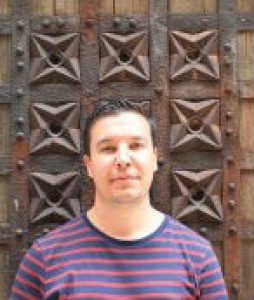Dr Dagan Jenkins
 PhD
PhDUniversity College London
 United Kingdom
United Kingdomd.jenkins@ucl.ac.uk
www.ucl.ac.uk/child-health/research/genetics-and-genomic-medicine/cilia...
Research Interests
IFT, Carpenter syndrome, Jeune syndrome, skeletal ciliopathies, cilia trafficking
Specific questions that we wish to answer are:
Why do patients with mutations in the same gene present with different disease severities and what are the mechanisms that account for clinical variability?
How do stochastic processes determine clinical outcomes in complex morphological traits?
Why are some tissues more susceptible to disease than others?
Generality of our approach:
In tackling these questions for skeletal ciliopathies, we are always thoughtful of developing concepts and experimental approaches that can be applied widely to many other genetic diseases. As such, we use skeletal ciliopathies as a paradigm to study autosomal recessive genetic diseases in general. Most IFT proteins are WD40-domain containing proteins which is one of the largest protein families in humans. Our focus on missense mutations and splicing represents mechanisms that are directly relevant to many syndromes featuring multiple affected tissues.
In relation to the specific questions listed above, our work broadly falls into three overlapping themes:
Theme 1 – Missense mutations and allelic variation.
Theme 2 – Stochastic splicing processes and dynamical systems modelling.
Theme 3 – Whole organism phenotyping in isogenic genetic models of human mutations.
Research summary
A significant subset of autosomal recessive Mendelian diseases (we estimate 10-20%) are disproportionately enriched for missense mutations, and rarely or never carry frameshift or nonsense mutations in causative genes. These missense mutations are therefore likely to be hypomorphic. The aim of this work is to use these hypomorphic missense mutations to dissect protein interaction networks and genetic threshold effects in different tissues, which will allow us to prioritise disease mechanisms for different phenotypes.
We are formally testing these hypotheses through experimental comparison of the effects of frameshift and missense mutations on quantitative protein-protein interactions and cellular and organismal phenotypes. We have shown that different missense mutations can have radically different phenotypic consequences when we have engineered these exact patient mutations in isogenic lines of mice (Figure 2). Together with collaborators in Germany and London, we have shown that for some genes and the proteins they encode, this correlates with the location of each mutation within the protein and the effects on IFT complex formation. In other genes, we have found unexpected roles for missense mutations in inducing alterative splicing, leading to stochastic levels of functional rescue which varies between individuals and tissues.
